
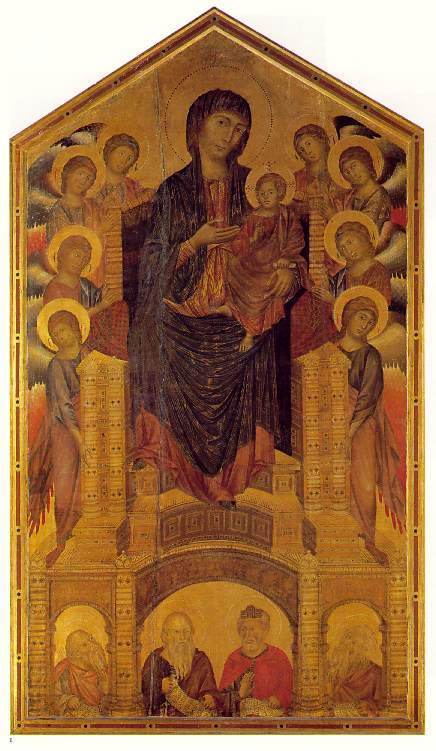 |  | 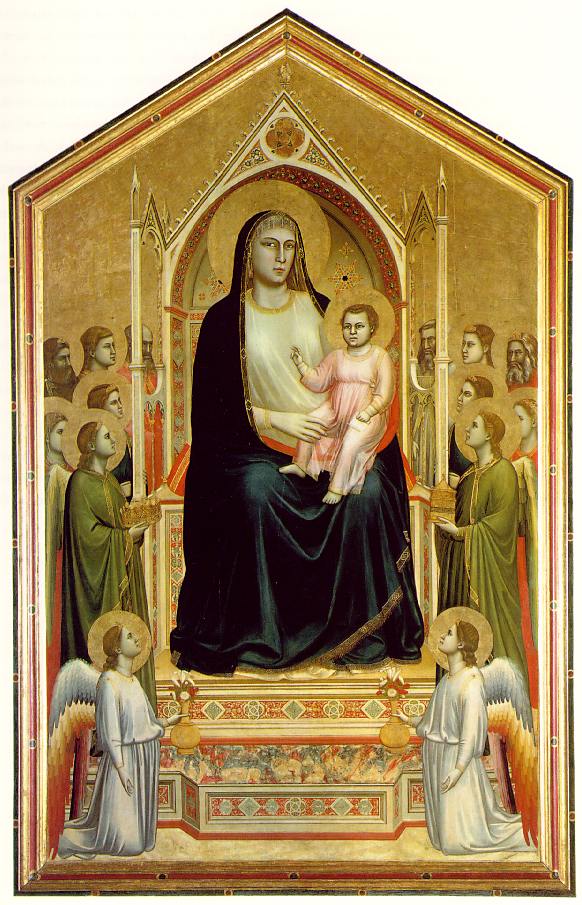 |
Santa Trinita Madonna | Madonna Rucellai | Ognissanti Madonna |
Cimabue, c1260/80 | Duccio, 1285 | Giotto, c 1310 |
height-to-width ratio=1.726 | height-to-width ratio=1.552 | height-to-width ratio=1.593 |
6.67% more than &phi | 4.08% less than &phi | 1.55% less than &phi |
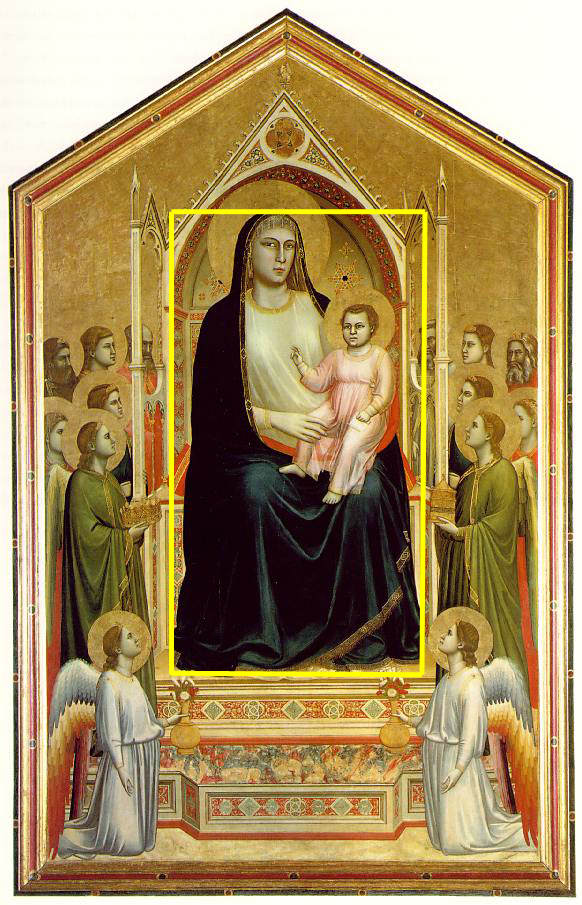 |  |
Giotto's Madonna, with rectangle defined by central figures | Same Madonna, with rectangle defined by throne |
height-to-width ratio=1.83 | height-to-width ratio=1.78 |
10% more than &phi | |
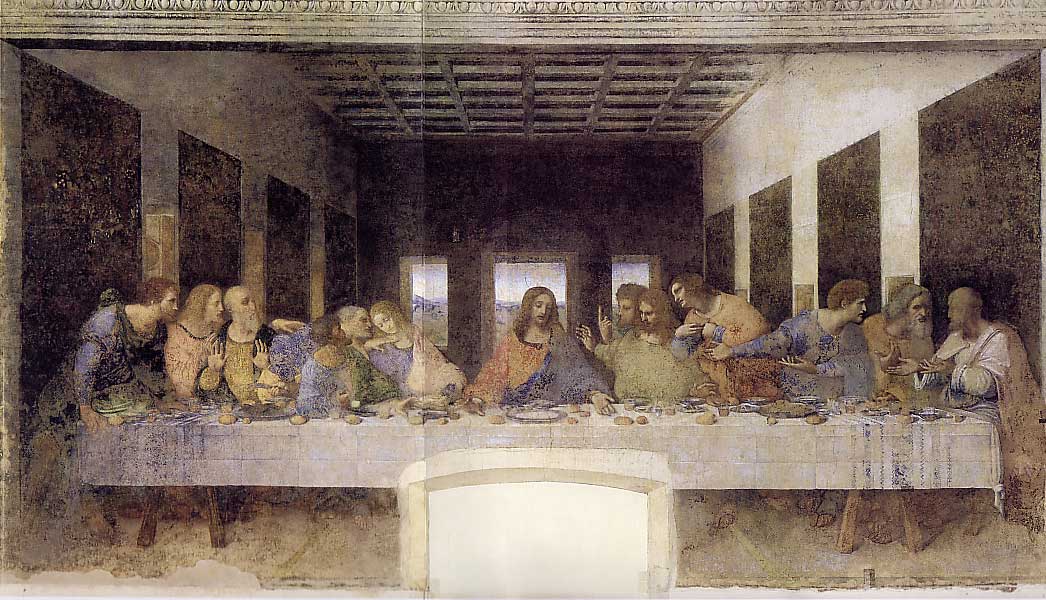 |
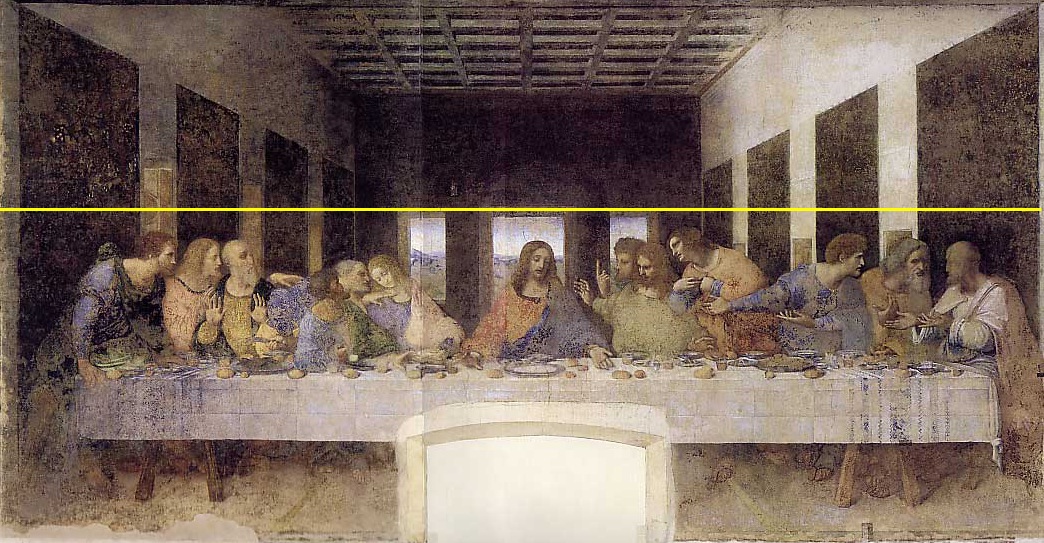 |
Does that line divide the height of the mural into Extreme and Mean Ratio? |
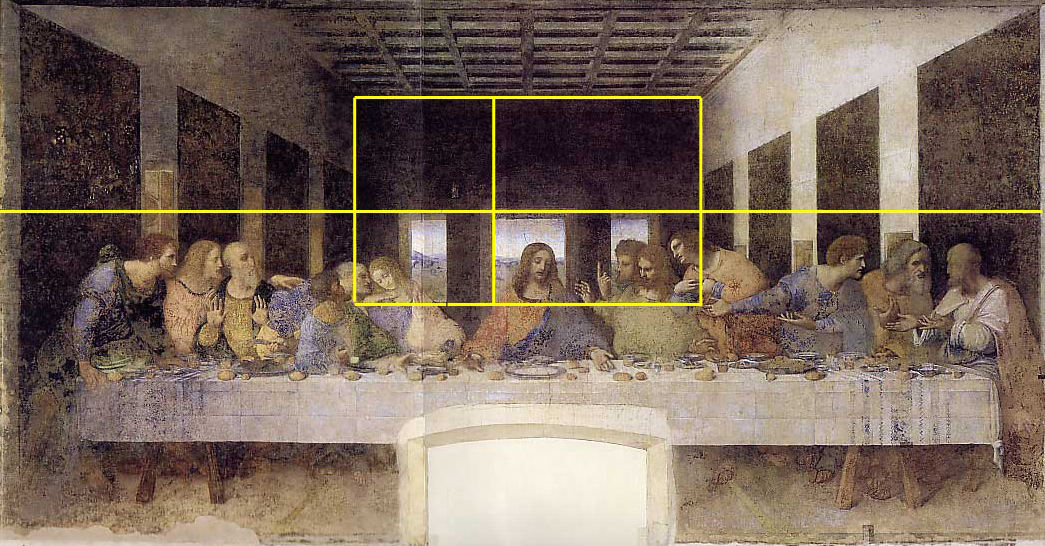 |  |
| The rear wall (down to the bottoms of the windows) forms a rectangle. Is it Golden? I then drew vertical lines at the division between the outer view and the central window. Does it look as if Leonardo may have been placed these windows in these particular spots for a reason? | |
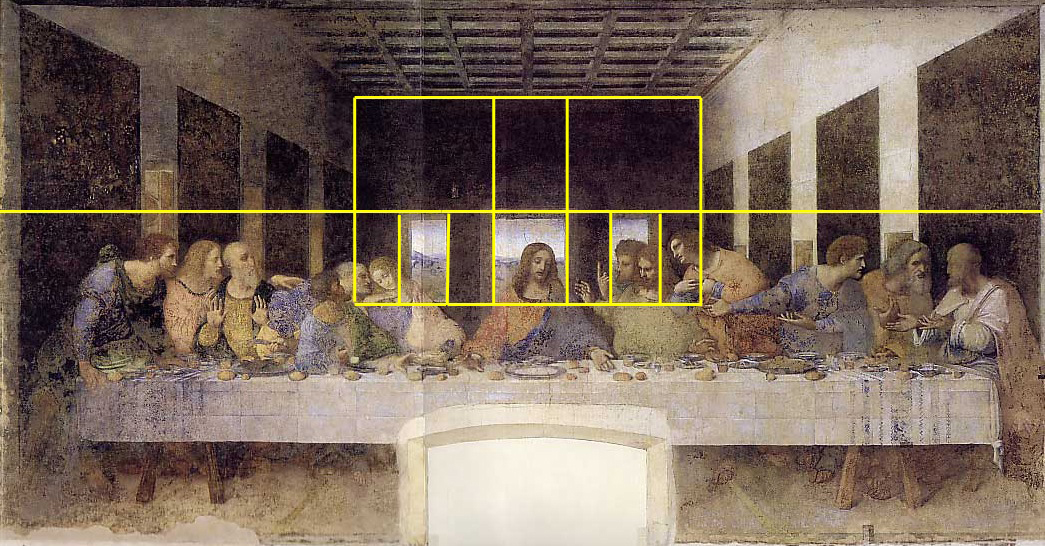
| |
| I then also drew vertical lines along the other windows. | |
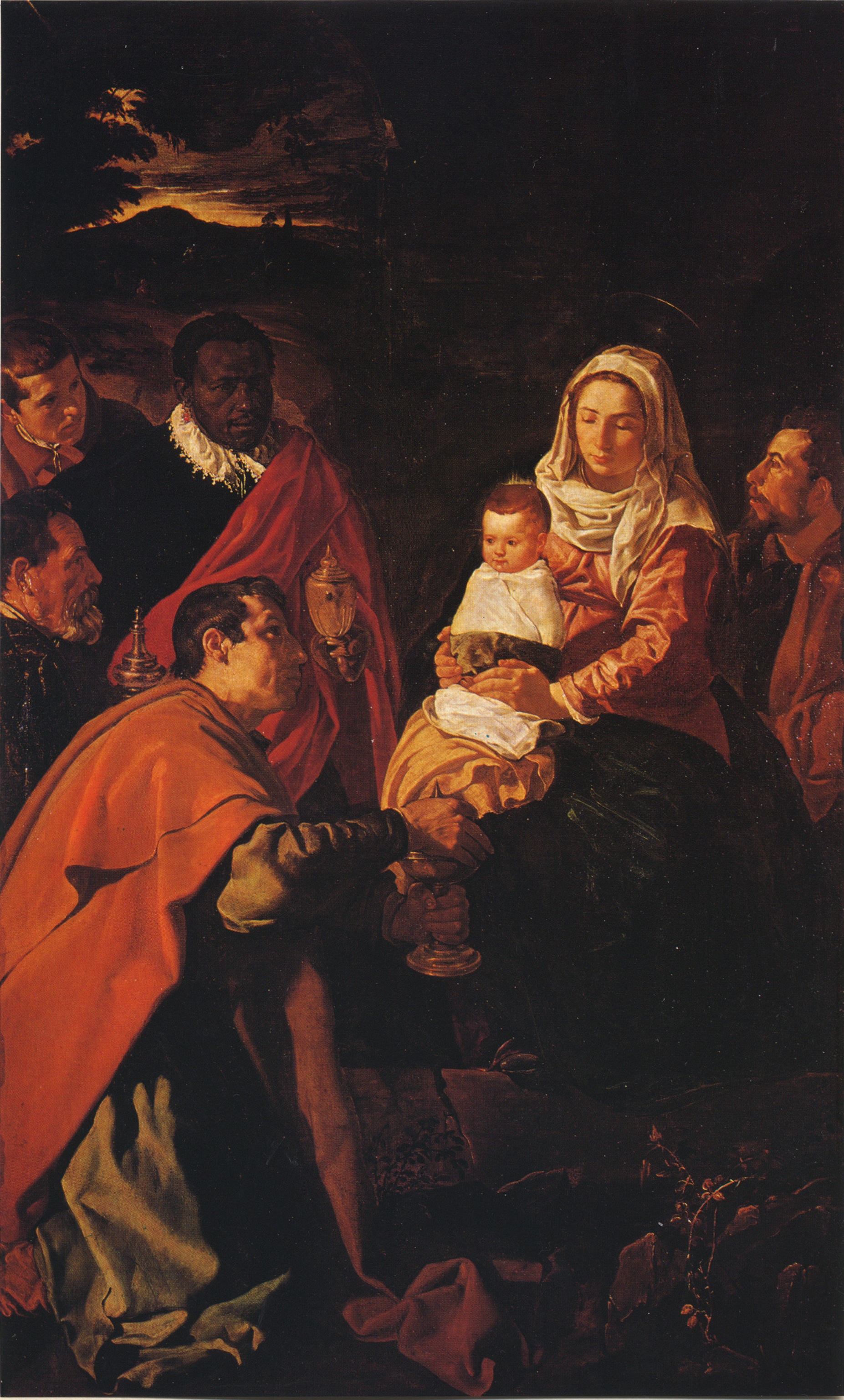 |
Diego Velázquez 80.25" x 49.25" h/w=1.62944 Thus h/w is only .7% off of φ |
 | Diagram from Bülent Atalay's Math and the Mona Lisa. In it, the painting appears to be subdivided into a smaller |
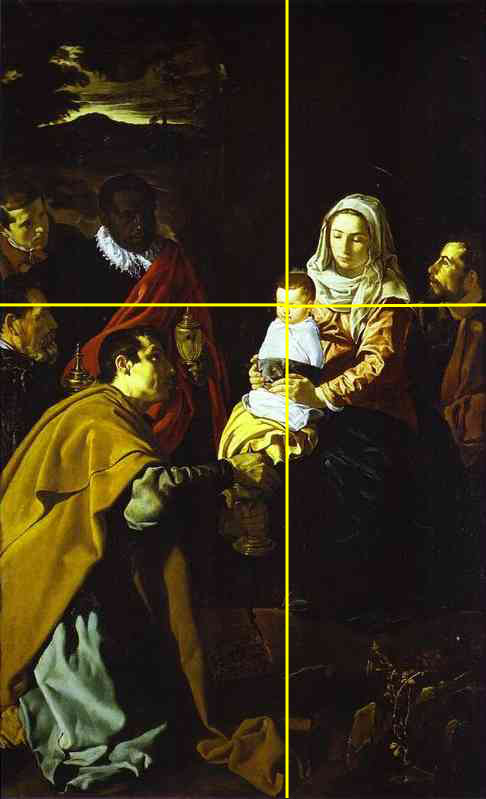 | My version of this same diagram, using a photo from a book on Velázquez. That photo did not have the same proportions as the painting is supposed to, which makes it impossible to draw the internal golden rectangle and square gnomon. Instead, I drew the horizontal and vertical lines through the eyes, and then measured to see how close the various rectangles were to being Golden, and the supposed squares were to being in fact square.
|
Golden Ratio in Nature, again
Back to the Golden Ratio | Back to Inclass homepage